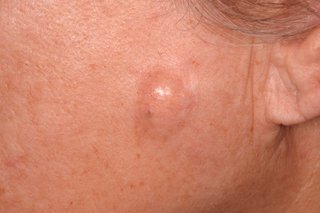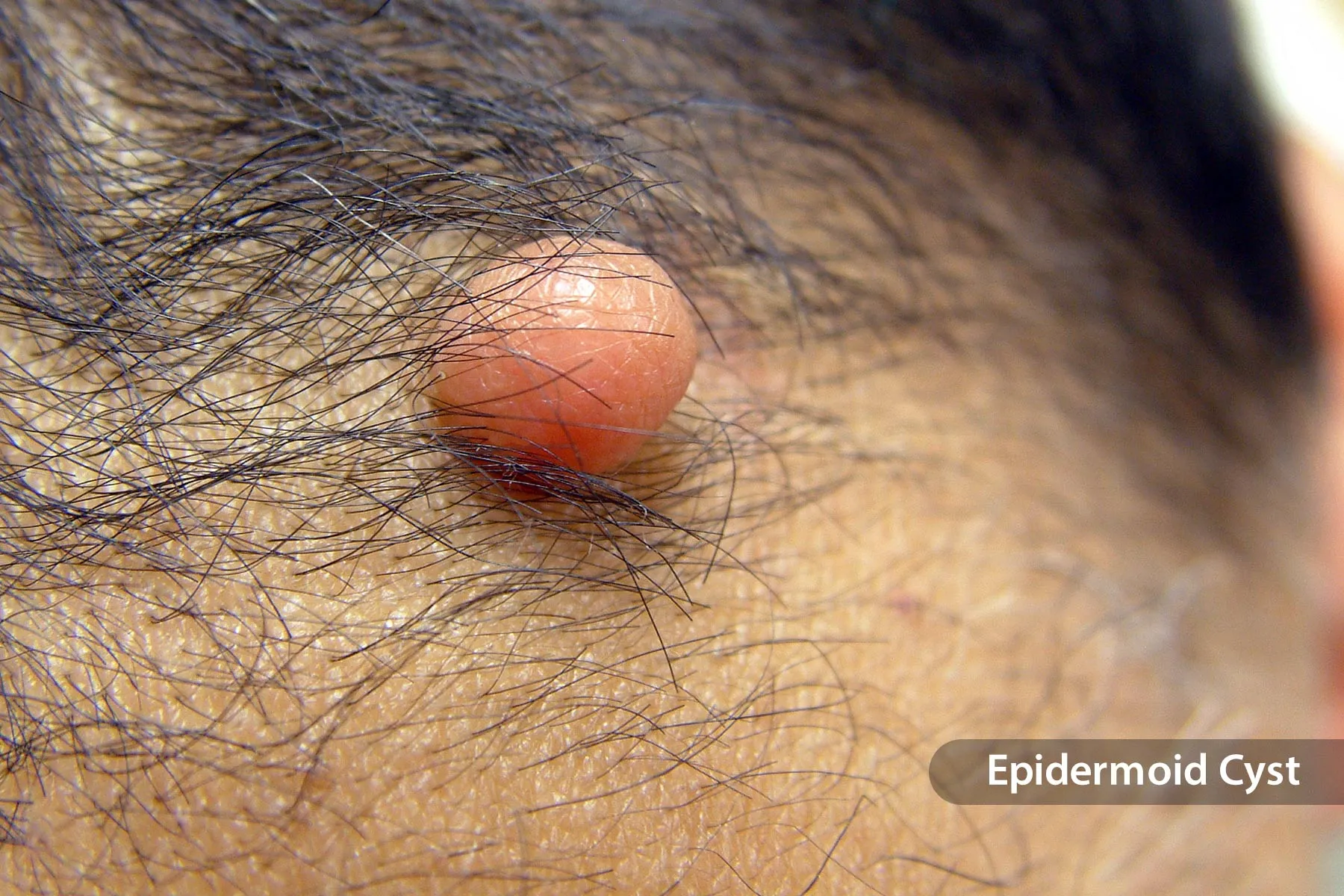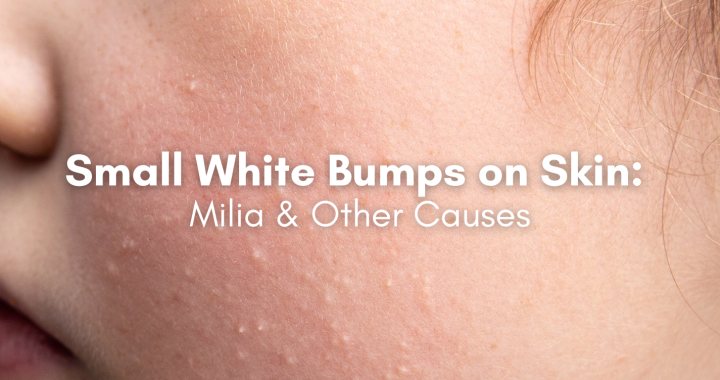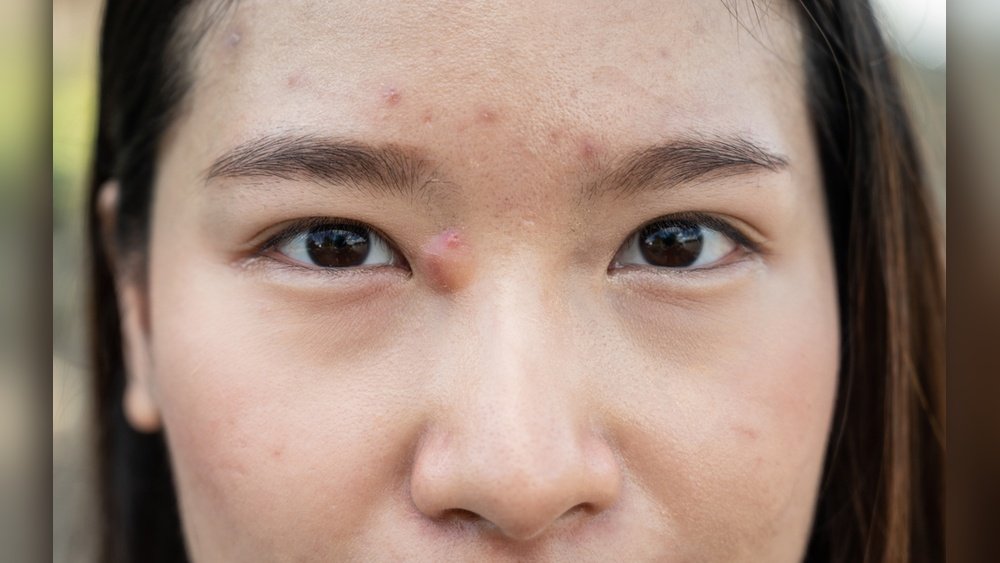Have you noticed soft bumps appearing on your face right after a facial treatment? You’re not alone, and it’s a common experience that can leave you wondering if something went wrong.
These small, sometimes red or tender bumps can feel unsettling, especially when you expected glowing, smooth skin instead. But here’s the good news: these bumps often signal your skin’s natural response to deep cleansing and renewal. Understanding why these bumps show up and how to care for your skin afterward can make all the difference.
Keep reading to discover why these soft bumps appear, how to tell if they’re normal, and what simple steps you can take to soothe your skin and enjoy the full benefits of your facial.

Credit: www.nhs.uk
Common Causes Of Soft Bumps
Soft bumps on the face after a facial treatment can be confusing and concerning. These bumps appear as small, raised areas that feel tender or smooth. They often result from various skin reactions during or after the facial process. Understanding the common causes helps in managing and preventing them effectively.
Facial treatments cleanse, exfoliate, and stimulate the skin deeply. This process can sometimes trigger temporary skin responses. The causes of soft bumps range from mild irritation to underlying skin conditions. Identifying the root cause is key to proper care and faster recovery.
Post-facial Purging
Purging happens when deep impurities come to the surface quickly. The skin pushes out clogged pores and dead cells after treatments like exfoliation or extractions. This causes small red bumps, whiteheads, or blackheads. Purging usually appears in areas where acne is common. It lasts about one to two weeks and signals that the facial is working.
Allergic Reactions
Some facial products contain ingredients that irritate sensitive skin. Allergic reactions cause redness, swelling, and soft bumps. These bumps may feel itchy or tender. Common allergens include fragrances, preservatives, and certain acids. Patch testing new products can help avoid allergies.
Clogged Pores
Facial treatments open pores and remove dirt, but heavy creams or oils used afterward can clog them again. Clogged pores trap oil and dead skin, forming soft, raised bumps. Using non-comedogenic products after a facial reduces the chance of clogged pores.
Skin Irritation
Strong exfoliants or aggressive massages during a facial can irritate the skin. Irritation causes inflammation and soft bumps as the skin reacts to stress. Over-exfoliating or scrubbing too hard damages the skin barrier. Gentle techniques and soothing products help prevent irritation.
Infection From Extraction
Extractions remove blackheads and whiteheads but can sometimes cause minor infections. If bacteria enter the open pores, small, soft bumps or pustules may form. Keeping the skin clean and avoiding touching the face after extractions lowers infection risk.

Credit: www.webmd.com
Signs Of Skin Purging
Skin purging is a common reaction after facial treatments. It happens when the skin pushes out deep dirt and clogged pores. This process can cause soft bumps or small pimples to appear. Recognizing the signs of purging helps you understand your skin’s reaction. It also guides you on how to care for your skin during this phase.
Appearance And Duration
Purging shows as small, red or white bumps on the skin. These bumps may look like pimples, blackheads, or whiteheads. They usually appear in areas where you often get acne. The bumps are soft and not painful in most cases.
This phase lasts for a short time, generally one to two weeks. It ends as the skin completes its natural renewal cycle. After purging, your skin often looks clearer and healthier.
Location And Symptoms
Purging appears mainly in spots where you normally have breakouts. These include the forehead, chin, and cheeks. The bumps come with mild redness and slight swelling. You may also notice some dryness or peeling around these areas.
Other symptoms like itching or burning are usually mild or absent. If you feel strong irritation or new breakouts in unusual places, it may not be purging. In that case, consider consulting a skincare professional.
Differentiating Breakouts From Purging
Soft bumps on the face after a facial treatment can cause concern. Understanding whether these bumps are breakouts or purging helps manage your skin better. Both look similar but have different causes and treatments. This section explains how to tell them apart clearly.
Underlying Causes
Purging happens when a facial speeds up skin cell turnover. It brings hidden impurities to the surface. This process clears clogged pores and deep dirt. Purging shows as small, red bumps or whiteheads. These appear in usual acne spots.
Breakouts occur from irritation or reactions to products. They may happen in new places on the face. Breakouts often result from allergies or blocked pores. The skin barrier might be damaged, causing more bumps.
When To Seek Help
Purging usually lasts one to two weeks. The skin clears itself after this time. If bumps stay longer or get worse, see a dermatologist. Also, consult a doctor if bumps spread to new areas. Severe redness, pain, or swelling needs professional care.
Stop using new products if breakouts increase. A skin expert can suggest gentle treatments. Proper care prevents scars and further damage. Early help improves healing and skin health.
Immediate Remedies For Soft Bumps
Soft bumps on the face after a facial treatment can cause discomfort and worry. Immediate care helps soothe the skin and reduce these bumps quickly. Simple remedies calm irritation and support healing right away. Acting gently is key to avoid worsening the condition.
Gentle Cleansing And Moisturizing
Use a mild cleanser to wash your face twice daily. Avoid harsh scrubs and strong soaps that irritate skin. Pat your face dry with a soft towel instead of rubbing. Apply a fragrance-free moisturizer to keep skin hydrated. Moisturizing helps restore the skin’s protective barrier. This reduces redness and soft bump formation.
Cold Compress Benefits
Apply a cold compress to the affected areas for 5 to 10 minutes. The cold temperature reduces swelling and calms inflammation. Use a clean cloth soaked in cold water or chilled gel packs. Repeat this several times a day for best results. Cold compresses also provide immediate relief from itching and discomfort.
Long-term Skin Care Tips
Maintaining healthy skin after facial treatments requires consistent care. Long-term skin care helps prevent soft bumps and keeps your face smooth. Simple daily habits support skin healing and improve its texture over time.
Focus on nourishing your skin from inside and outside. Choose the right products and manage stress to reduce skin problems. These steps create a strong foundation for clear, healthy skin.
Healthy Diet And Stress Management
A balanced diet provides essential vitamins for skin repair. Eat fruits, vegetables, and foods rich in omega-3 fatty acids. Drink plenty of water to keep skin hydrated and flush out toxins.
Stress can cause skin flare-ups and slow healing. Practice relaxation techniques like deep breathing or meditation daily. Regular exercise also reduces stress and improves blood flow to the skin.
Non-comedogenic Products And Exfoliation
Use non-comedogenic skincare products to avoid clogging pores. These products reduce the chance of bumps forming after facials. Choose gentle cleansers and moisturizers suited for your skin type.
Exfoliate skin regularly but gently to remove dead cells. This helps prevent buildup that causes soft bumps. Use mild exfoliants once or twice a week to keep skin smooth and clear.
Professional Treatments And Advice
Professional guidance plays a key role in managing soft bumps after facial treatments. These bumps may signal your skin’s reaction to certain products or techniques. Seeking expert advice helps identify the cause and find the right solution. Professionals offer treatments tailored to your skin type and condition. They ensure healing while preventing further irritation or damage.
Understanding when to seek medical help and how to adjust your facial routine is essential. Proper care reduces discomfort and promotes clearer skin. Trusting trained specialists provides peace of mind during your skincare journey.
When To Consult A Dermatologist
Visit a dermatologist if bumps persist beyond two weeks. Also seek help if bumps spread or worsen in appearance. Sudden pain, swelling, or signs of infection require prompt attention. A dermatologist can diagnose underlying issues like allergies or infections. They recommend treatments that heal skin gently and effectively. Early consultation prevents complications and speeds recovery.
Adjusting Facial Treatments
Modify your facial routine based on skin response. Avoid harsh scrubs or strong acids if bumps appear. Use gentle cleansers and moisturizers to soothe irritation. Inform your esthetician about any previous reactions. They can tailor treatments to avoid triggers and support healing. Regularly update your skincare professional about changes in your skin. This helps maintain a safe and effective facial regimen.

Credit: www.vucare.com
Frequently Asked Questions
Is It Normal To Get Bumps After A Facial?
Yes, mild bumps after a facial are normal as skin purges impurities. These usually clear within two weeks. Avoid picking and use gentle skincare to help healing. Consult a professional if breakouts persist beyond six weeks or worsen.
How To Get Rid Of Soft Bumps On Face?
Clean your face daily with a gentle cleanser. Apply cold compresses to reduce bumps. Exfoliate regularly and use non-comedogenic moisturizers. Maintain a healthy diet and manage stress. Consult a dermatologist if bumps persist or worsen.
What Is Purging After A Facial?
Purging after a facial is a temporary acne flare-up caused by deep impurities surfacing. It signals skin cleansing but clears within two weeks. Avoid picking, use gentle products, and be patient. Consult a professional if breakouts persist beyond six weeks or worsen.
How Long Do Facial Bumps Last?
Facial bumps usually last 1 to 2 weeks as skin purges impurities. If bumps persist beyond six weeks, seek professional advice.
Conclusion
Soft bumps on your face after a facial treatment are often normal. These bumps can appear as your skin clears out impurities. They usually go away within a week or two. Keep your skin clean and moisturized to help healing.
Avoid picking or irritating the bumps to prevent scars. Use gentle skincare products suited for your skin type. If bumps last longer or worsen, consider seeing a skincare professional. Patience and proper care are key to smooth, healthy skin. Your skin will thank you for the gentle treatment.
 Skip to content
Skip to content 